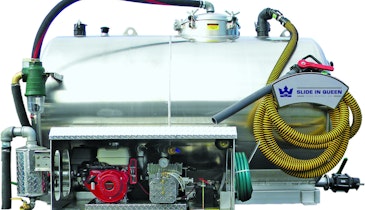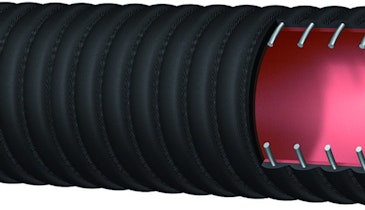Dear Editor,
I read with interest Roger Machmeier’s response (October 2010 Septic System Answer Man). I don’t take exception with anything he said but in fact agree with all he said. However, in explaining the problems caused by porous concrete I would have expected a more in-depth explanation of why concrete is porous and/or steps that could be taken to help solidify the concrete. The factors influencing the porosity of concrete are numerous. Maybe he can address these factors in a future issue.
The use of excessive amounts of water can create increased porosity. Since septic tank wall forms are normally narrow (2 1/2 to 3 inches), many producers will add water to increase the slump (flow ability) of the concrete mix. They do this to help reduce the possibility of honeycombs. This problem can be eliminated with the use of a “Super P” admixture, also know as a high range water reducer. A few ounces per yard of this product will give the same workability of gallons of additional water without the undesired side effects. In fact, not only will density and strength increase, porosity will decrease.
The addition of fly ash and air entraining admixtures to the concrete can reduce the demand for water. Using smaller coarse aggregate will make it easier to get the concrete consolidated around re-enforcement items in the forms. (Unless a lower slump or Super P is used with the smaller aggregates, the change will be meaningless.)
The use of fiber instead of rebar or wire will help with consolidation and reduce the items available for possible acid/gas attack. Silica Fume added to the concrete will greatly enhance the density/porosity.
In Georgia, our regulations require us to use a minimum of a No. 3 rebar 12 inches on center both ways in our lids. We pour our lids with the same concrete mix we use for our tanks. Our lids will have both rebar and fiber in them. The fiber in the tanks and lids help control shrinkage and cracking.
As a ready-mix concrete producer and a pre-cast concrete products producer, I could talk more about the influences of the different materials used in concrete that have positive and negative effects.
Don Barfield
AAA Concrete Products Corp.
Albany, Ga.
Dear Editor,
I read Roger Machmeier’s response to the issue of a deteriorating concrete septic tank (October 2010 Septic System Answer Man). This is a complicated issue, and there is more poor information on this topic than there is good information. Machmeier was correct in much of what he listed. Durability and absorbency is the best defense against chemical attack. I have spent 15 years researching this issue; the first five or six fixing quality problems. I was the quality director for a large Midwestern precast concrete manufacturer. We produced about 2,000 concrete tanks each year, and we had one or two problem tanks each year as well. As the writer to Machmeier suggested, we saw much more of a problem with the distribution boxes.
Again, concrete with a low water-to-cement ratio is the best line of defense. This is not enough though; good concrete has to be properly cured. Precasters strip their molds in about 16 hours. The concrete chemistry is still progressing through several stages of paste formation. Poor curing leaves the concrete more porous, making it susceptible to chemical attack.
My research indicates that H2S gas is formed by anaerobic bacteria in the water. The gas is released through the scum layer when there is turbulence. The H2S combines with H2O to form thiosulfuric acid. This mild acid will etch the concrete and reduce pH. In a warm, moist environment, a series of bacteria will colonize on the concrete surface at a pH of about 9. This bacteria oxidizes the H2S and secretes acid. This acid reacts with calcium hydroxide to produce gypsum. The gypsum reacts with aluminates in the concrete paste forming ettringite. The ettringite expands when it is saturated, causing micro-cracking. This allows for deeper penetration of the bacteria. The process continues until the structure is nearly disintegrated. The bacteria that is eating the concrete is called Acidithiobacillus.
In addition to good quality concrete and proper curing, something needs to be present to stop the formation of this strain of bacteria. There is a new organosilane available that makes the concrete surface uninhabitable for bacteria. This silane solution can be applied to existing concrete or can be added to the concrete batch. By breaking the chain of bacteria production, the production of H2SO4 will be stopped. Concrete densifiers can also help reduce deterioration by making it harder for the acid to contact calcium hydroxide and absorb into the concrete. And, while their use shows great promise in increasing the life of concrete, reactive densifiers should not be confused with anti-bacteria treatments.
Sam Lines
ConSeal Concrete Solutions Inc.
Contact us: Pumper strives to serve the liquid waste industry with interesting and helpful stories. We welcome your comments, questions and column suggestions and promise a prompt reply to all reader contacts. Call 800/257-7222; fax 715/546-3786; e-mail Pumper editor Jim Kneiszel at editor@pumper.com.





